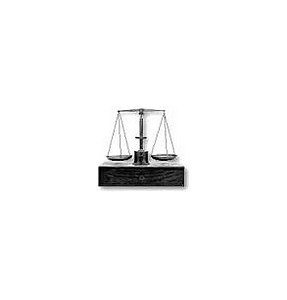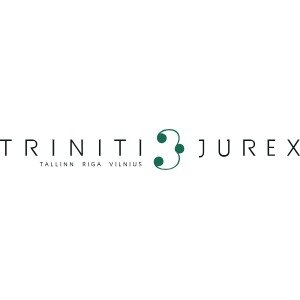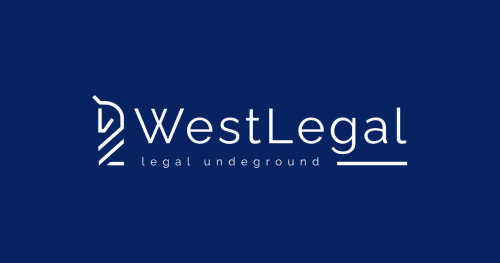Best Bankruptcy Lawyers in Estonia
Share your needs with us, get contacted by law firms.
Free. Takes 2 min.
Or refine your search by selecting a city:
List of the best lawyers in Estonia
About Bankruptcy Law in Estonia
Bankruptcy in Estonia is a legal process governed by the Estonian Bankruptcy Act. It is designed to provide relief to individuals and businesses that are unable to pay their debts. The process involves the liquidation of assets and the distribution of proceeds to creditors. The objective is to offer debtors a fresh start and restore their financial stability while ensuring fair treatment of creditors. Bankruptcy proceedings can lead either to the liquidation of the debtor's assets or the restructuring of their financial obligations, depending on the circumstances.
Why You May Need a Lawyer
There are several situations in which you might require legal assistance with Bankruptcy in Estonia. Individuals often need guidance when struggling with overwhelming debt and considering declaring Bankruptcy. Businesses facing financial distress may need expert advice on bankruptcy proceedings to protect their interests. A lawyer can help navigate the complex legal landscape, assess the viability of bankruptcy options, negotiate with creditors, and ensure compliance with legal obligations. Additionally, legal representation is crucial in filing bankruptcy paperwork correctly and in defending against predatory practices by creditors.
Local Laws Overview
Estonian bankruptcy law is primarily centered around the Bankruptcy Act, which outlines procedures for both individuals and companies. Key aspects include the requirement to file a petition with the court to initiate proceedings, the appointment of a bankruptcy trustee to manage the case, and the formulation of a bankruptcy estate that encompasses all the debtor’s assets. The law also details the rights and obligations of debtors and creditors, mechanisms for debt restructuring, and the discharge of certain types of debt. Importantly, Estonian law encourages settlements between debtors and creditors before resorting to formal bankruptcy proceedings.
Frequently Asked Questions
What is Bankruptcy under Estonian law?
Bankruptcy refers to a legal procedure used when a person or a business cannot repay their outstanding debts. It involves either liquidation of assets or reorganization under court supervision.
Who can file for Bankruptcy in Estonia?
Both individuals and legal entities, such as companies, can file for Bankruptcy in Estonia if they are insolvent and unable to meet their debt obligations.
How long does the Bankruptcy process take in Estonia?
The duration can vary significantly based on the complexity of the case, but typically, it may take several months to years from the filing of the petition to the conclusion of the bankruptcy proceedings.
Can I keep any assets after declaring Bankruptcy?
Certain assets may be exempt from bankruptcy proceedings, allowing you to retain essential property necessary for living and working. The specifics can vary, so it's important to consult with a lawyer.
Will declaring Bankruptcy affect my credit score?
Yes, declaring Bankruptcy will significantly impact your credit score and remain on your credit report for a number of years. However, it can provide a fresh start by clearing unmanageable debts.
What is the role of a bankruptcy trustee?
A bankruptcy trustee is appointed to oversee the bankruptcy process, manage the debtor’s estate, handle asset liquidation, and distribute proceeds to creditors.
Can creditors object to a Bankruptcy filing?
Yes, creditors can object to the proceedings or dispute particular aspects of the case, such as the valuation of assets or the proposed distribution of funds.
Is debt restructuring possible during Bankruptcy?
Yes, Estonian law allows for the restructuring of debts as an alternative to liquidation. This involves arranging a repayment plan under court supervision.
Do I need to attend court proceedings during Bankruptcy?
You will likely need to attend certain proceedings, especially if there are disputes that require resolution. Your lawyer can help you understand which appearances are necessary.
How is priority determined among creditors?
Creditors are classified by priority based on the nature of the claim, as per the Estonian Bankruptcy Act. Secured creditors generally have priority over unsecured creditors.
Additional Resources
For more information on Bankruptcy in Estonia, consider reaching out to the Estonian Bar Association for lawyer recommendations. The Estonian Chamber of Bailiffs and Trustees in Bankruptcy can also provide valuable insights. Additionally, visit the Ministry of Justice’s website for the latest legal frameworks and updates regarding bankruptcy regulations.
Next Steps
If you believe you need legal assistance with Bankruptcy, the first step is to consult with a qualified attorney specializing in bankruptcy law. Gather all financial documents, such as debt statements, assets, and income records, to present a clear picture of your financial situation. An attorney can assess your case, advise on the best course of action, and represent your interests throughout the process. Prepare questions and concerns to ensure you understand your rights and obligations prior to engaging in bankruptcy proceedings.
Lawzana helps you find the best lawyers and law firms in Estonia through a curated and pre-screened list of qualified legal professionals. Our platform offers rankings and detailed profiles of attorneys and law firms, allowing you to compare based on practice areas, including Bankruptcy, experience, and client feedback.
Each profile includes a description of the firm's areas of practice, client reviews, team members and partners, year of establishment, spoken languages, office locations, contact information, social media presence, and any published articles or resources. Most firms on our platform speak English and are experienced in both local and international legal matters.
Get a quote from top-rated law firms in Estonia — quickly, securely, and without unnecessary hassle.
Disclaimer:
The information provided on this page is for general informational purposes only and does not constitute legal advice. While we strive to ensure the accuracy and relevance of the content, legal information may change over time, and interpretations of the law can vary. You should always consult with a qualified legal professional for advice specific to your situation.
We disclaim all liability for actions taken or not taken based on the content of this page. If you believe any information is incorrect or outdated, please contact us, and we will review and update it where appropriate.
Browse bankruptcy law firms by city in Estonia
Refine your search by selecting a city.
















